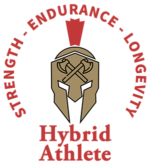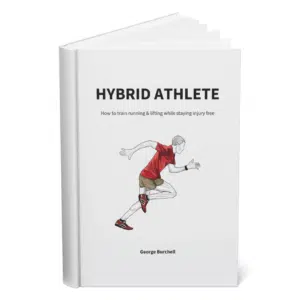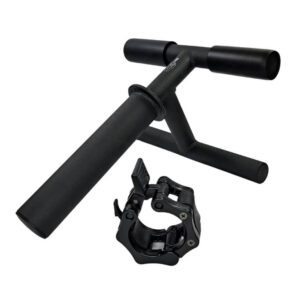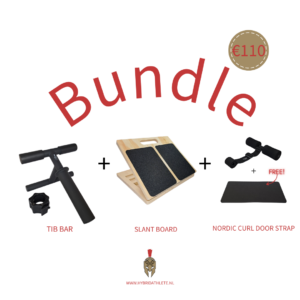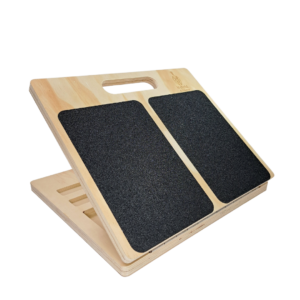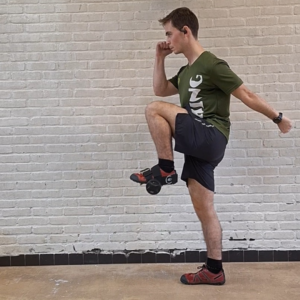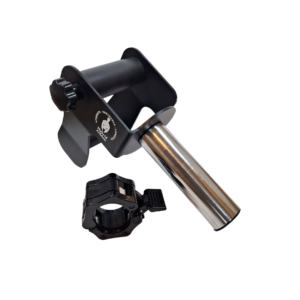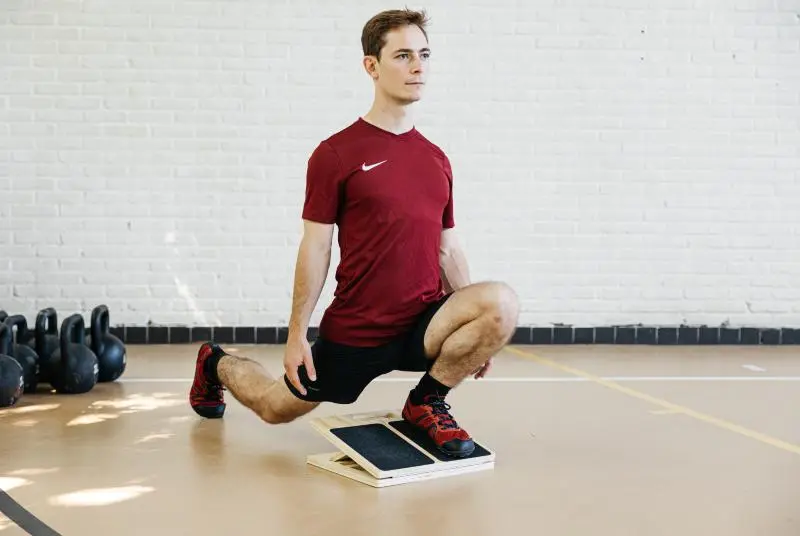
If you’ve been in a standard gym in the last couple of years, you have certainly heard of knees over toes and the benefits this “squatting method” brings.
Of course, KOT is more than just a way to squat deeper – it’s a modern, scientifically backed, way to utilize the full range of motion of your lower body.
We’re aware that getting into KOT can be intimidating. But, the endless benefits of knees over toes are worth fighting that fear.
Let’s dig in!
Table of Contents
Knees Over Toes – The Anatomy
Essentially, the KOT movements involve the entire lower-leg kinetic chain.
The force (from running, jumping, weights, etc.) starts at the foot. It then gets absorbed and sent over the ankle, knee, and ultimately the hip, as the biggest joint in the chain.
This foot-ankle-knee-hip kinetic chain is the biomechanical basis for knees-over-toes movement.
So, let’s start at the foundation – the foot.
1. Foot – The First To Take The Hit
Feet are first in line to take the stress in during movement. A stable foot is necessary for a stable foundation.
It consists of 26 bones, joints, muscles, and ligaments. It supports weight, absorbs shock, and provides stability. The foot’s bones include the talus, calcaneus, navicular, cuboid, cuneiform bones, metatarsals, and phalanges.
The foot is a complex structure with three arches: two longitudinal (medial and lateral) and one transversal. Strong arches play a vital role in weight-bearing, shock absorption, and stability.
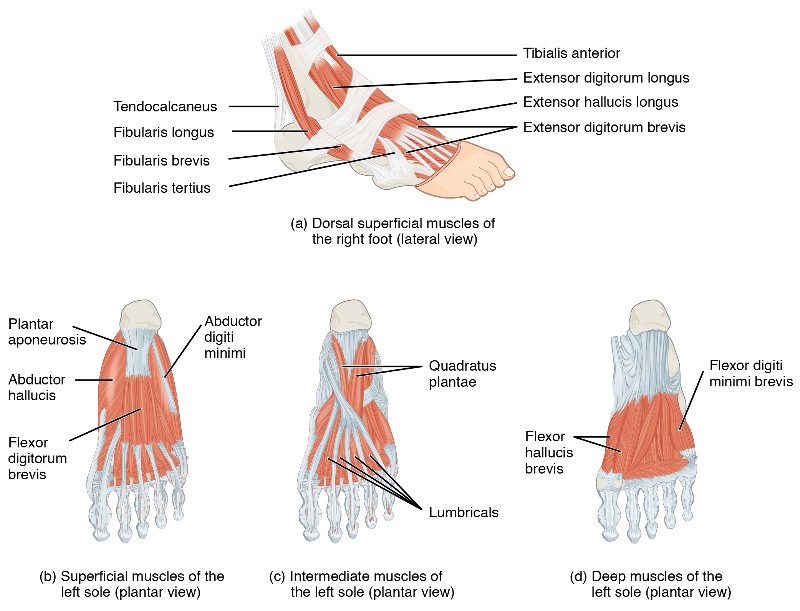
The medial arch, running along the inner side, is especially important. It consists of bones like the calcaneus, talus, navicular, cuneiforms, and metatarsals. Strong arches distribute forces evenly during activities like walking, running, and jumping.
For example, one of the most important muscles that needs to be targeted by a KOT program is the flexor hallucis longus, tackled by the FHL calf raise.
Foot exercises and benefits of strong feet
Weak arches, often seen in flat feet or pes planus, can lead to issues and injuries up the kinetic chain. Insufficient arch support can cause excessive pronation (inward rolling) and altered foot alignment.
Altered foot mechanics affect the ankle, knee, hip, and lower back. Excessive pronation may contribute to conditions like patellofemoral pain syndrome or iliotibial band syndrome. Hip pain or dysfunction can also occur due to changed joint alignment.
To prevent such injuries, it is important to strengthen the arches. Strong arches promote foot stability, and optimal biomechanics while reducing injury risk up the kinetic chain.
Foot strength comes from training the intrinsic muscles of the feet, calve mobility/strength, managing tightness, and dynamic movements. Here’s a list of foot exercises to get you started:
- Towel grabs
- Toe spreading
- Foot doming
- Calve raises
- Foam rolling the feet and calves
- Dynamic hops and skipping
*Remember, different people have different foot structures. So, the approach to arch strengthening may vary. Consult a healthcare professional or sports medicine specialist for personalized guidance.
2. Ankle – To Set The Movement Straight
One of the most talked about joint structures in the KOT niche is the ankle. Ankle mobility and strength are something every athlete should aim for, no matter the discipline.
Joints like the ankle (talocrural joint) and subtalar joint enable up-and-down and side-to-side movement of the foot respectfully. So, in a way, the ankle is supported by the foot from below, and the shin muscles from above.
The ankle end-range motions refer to extreme joint movement, and are often a hot KOT topic. They’re vital for functional fitness. Ankle mobility, especially dorsiflexion and plantar flexion, is essential for activities like running, jumping, and squatting.
Ankle exercises and how to approach ankle mobility and strength
Insufficient ankle mobility leads to compensatory movements, stress on other joints, and higher injury risk. Limited dorsiflexion affects squat technique, causing caving knees, forward lean, and/or posterior pelvic tilt. When the pelvis tucks under, it causes decreased hip mobility and potential strain on the lower back.
To enhance performance and prevent injuries, improve ankle mobility and end-range motion through stretching, foam rolling, mobility exercises, and targeted strength training for the foot, ankle, and shin muscles.
One of the most famous methods to build up ankles are the split squats, including the ATG split squat as the ankle mobility staple. We’ve covered split squats in detail HERE.
Here’s a quick list of exercises to help you tackle ankle strength and mobility:
- FHL calf raises
- Tibialis raise
- Slant board calf stretches
- ATG split squat

3. Knee – Yes, it goes OVER the toes
Up until very recently, the consensus in the fitness community was that the knee shouldn’t go over the toe during a squat movement. However science today shows that the only way to properly load the knee joint is to let it go over the toe, aka to full ROM.
The knee joint is a complex hinge joint that connects the femur to the tibia.
The major ligaments include:
- anterior cruciate ligament (ACL),
- posterior cruciate ligament (PCL)
- medial collateral ligament (MCL)
- lateral collateral ligament (LCL)
The knee joint allows flexion (bending) and extension (straightening) movements. It is not designed to rotate and thus strong, mobile hips, feet, and ankles are crucial for absorbing ground reaction forces. This directly translates to knee bulletproofing and a lower risk of injuries.
Knee exercises and the importance of strong knees
The knees play a vital role in stability and control during movement. They ensure proper lower body alignment, distributing forces effectively. Weak or immobile hips can lead to altered mechanics, increasing the risk of knee injuries like patellofemoral pain or ACL tears.
Every athlete should train the ligaments of the knee and train the mobility in the ankles and hip to effectively transfer ground reaction forces through the body.
When it comes to knee exercises, we recommend the step downs, and reverse step-up exercises. One famous step progression is the Patrick, Poliquin, Peterson reverse step-up progression.
4. Hips – The top of the triple flexion and extension
Last, but not least, at the center of the body, we have the hips. The hip joint is a ball-and-socket joint formed by the femur and the pelvis. It is supported by ligaments, tendons, and muscles.
When it comes to KOT, it’s hip mobility that counts the most. The primary muscles responsible for hip mobility are:
- hip flexors
- extensors
- adductors
- abductors
Hips play a vital role in how the force is transmitted from the lower body to the upper body (most importantly – the spine).
Hip exercises and the importance of the triple flexion/extension
Triple flexion involves bending the ankle, knee, and hip joints simultaneously, such as in a squat or jumping motion. This movement is important for activities like running and jumping, as it helps to absorb shock and generate power.
This is important for explosive movements and overall lower body strength as well.
Both triple flexion and triple extension efficiency have been linked to injury prevention due to improved joint stability, strength, flexibility, and range of motion.
In simple terms, if your lower-body joints work together – you’ve grasped triple flexion/extension. But, if one of them is the weak link, the whole kinetic chain crumbles.
Here’s a list of stretches and exercises to help with hip mobility:
- Pistol squat
- ATG split squat
- Cossack squat
- Hip bridges
- Various types of lunge movements
Hybrid Athlete List of Favorite KOT Exercises
1. Reverse Sled pull
The reverse sled pull is a fundamental part of Ben Patrick’s knees over toes training methodology. It focuses on developing the feet, ankles, Achilles tendon, and knees.
Pulling the sled backward in the knees over toes position stimulates knee flexion and strengthens the knee joint from the inside out. It also drives nutrients into the knees to promote healing and recovery.
The sled is safe for all ages and athletic levels, making it an effective exercise for anyone. In addition, the sled pull improves the ability to decelerate, which is critical to acceleration. It can be incorporated into a daily routine as a warm-up or finisher.
2. Tibialis Raises with a Tib Bar
Stable knees over toes movements require strong shins. And, there’s no better way to approach this than with a tib bar.
This exercise allows you to achieve a full ankle range of motion while under a controlled load. At Hybrid Athlete, we hold the Tib Bar high, up among the most important pieces of exercise gear.
The tibialis raise standard is 25% of your body weight for 5 sets of 5 reps. But you can experiment on your own.
3. ATG Split Squat
When doing the ATG split squat, it’s crucial to lunge down while pushing your knee over your toes, and keeping your upper body straight. Be careful not to arch your lower back too much.
Remember that you need good ankle and hip mobility to get into this position. If you’re not used to having your knees over your toes, don’t worry. If you can’t do the ATG split squat right away, start from normal lunges, and build your way up. It takes practice to master this movement.
4. Nordic Hamstring Curl
The Nordic hamstring curl is an exercise that targets the hamstring muscles and is beneficial for athletes who want to improve their explosiveness. It involves lowering the body to the ground from a kneeling position while keeping the torso straight and using only the hamstrings to control the movement.
The exercise is considered good for the knees because it strengthens the hamstrings, which can help stabilize the knee joint and prevent injuries. Particularly those related to the anterior cruciate ligament (ACL).
Although the exercise can be done at home with no equipment, some low-cost equipment can make it more effective, such as a Nordic strap.
5. Reverse Nordic
The Reverse Nordic Curl is an exercise that works the quads and hip flexors.
It involves kneeling in a tall-kneeling position with your hips pushed forward and chest in line with your quads. This exercise can help build mobility, strength, and muscle in those areas.
It is the opposite of the Nordic Curl, which is a hamstring exercise. To perform the Reverse Nordic Curl, maintain a straight line between your chest and quads and bend at the knees to lean back until your back is on the ground. You will feel a strong stretch in the front of your thighs. Return to the tall-kneeling position and repeat the exercise.
6. Reverse step ups
The Patrick, Poliquin, and Peterson Progression is a cornerstone of the ATG/Knees Over Toes program. It involves three exercises: the Patrick step, the Poliquin step, and the Peterson step, which develop ankle mobility, knee & calf strength, and knee and ankle stability.
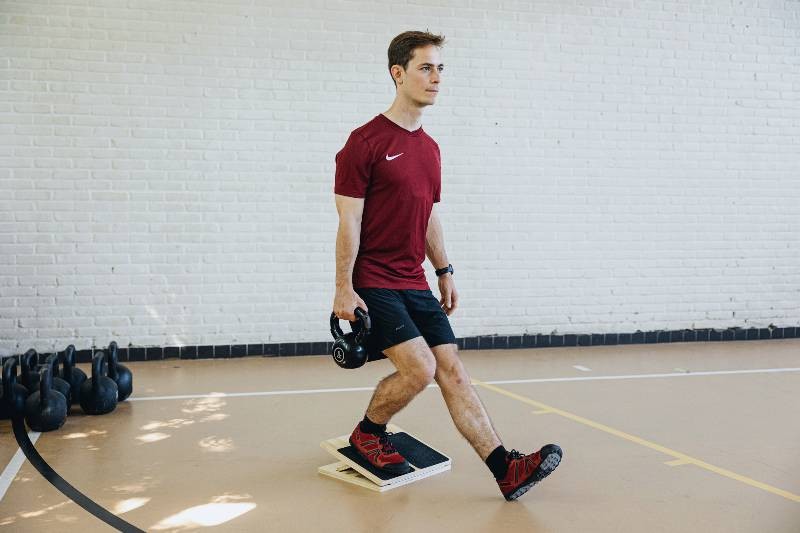
*Stretches to help you prepare
- Slant board calve stretch
- Incline pigeon
- Pancake stretch
- Seated good morning
- Couch stretch
When performing stretches, it’s important to focus on your breathing.
Use ‘belly breathing’ by inhaling through your stomach instead of your chest, and try to relax into the stretch with each exhale. Make sure to hold each stretch for at least 2 minutes to get the most benefit.
Many people don’t see results from stretching because they only hold the stretch for 30 seconds. Ideally, you should do these stretches twice a day, but even once a day is beneficial if you hold the stretches for long enough.
Start Your Knees Over Toes Journey Today!
As you can see, the Knees Over Toes methodology targets strength, balance, mobility, and stability of the lower body at the same time. It teaches us how to move naturally, be it running, lifting, jumping, or any other sport really.
Everyone needs a strong foundation to stand on, and the KOT method delivers just that. On top of that, by implementing KOT into your training, you get to bulletproof your legs, and protect your body from future injuries.
Remember – feel free to go knees over toes, always aim for a full range of motion, start with easier exercise variations, and NEVER work through the pain.
Good luck on your KOT journey!
Get the best knees over toes equipment at our shop:
GET THE BEST INJURY-PREVENTION TRAINING EQUIPMENT:
Above all, a storyteller. Then comes marketing, branding, writing music, powerlifting, and woodworking.
